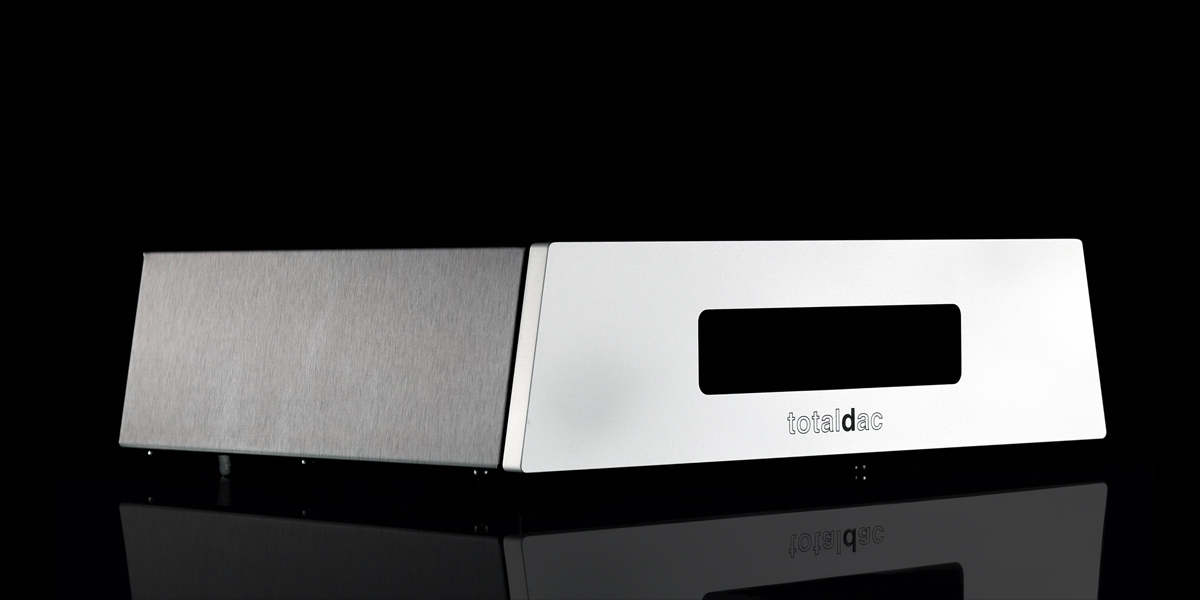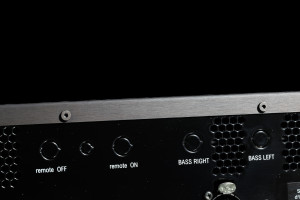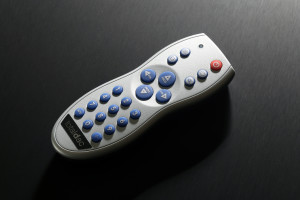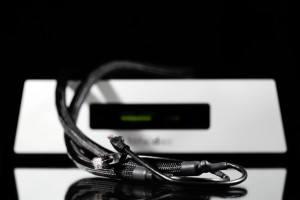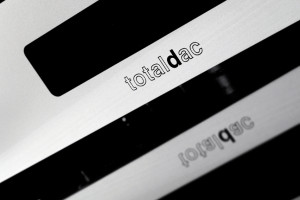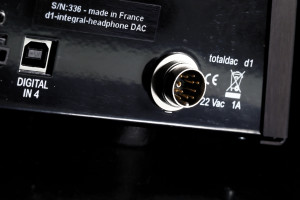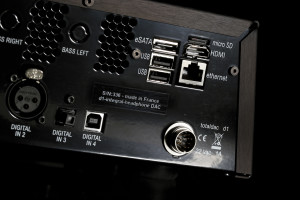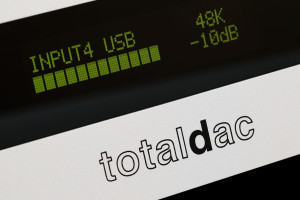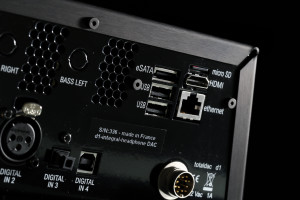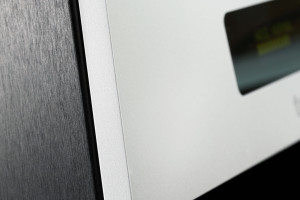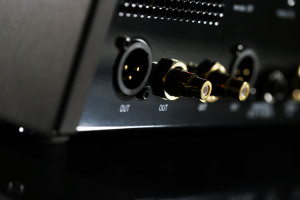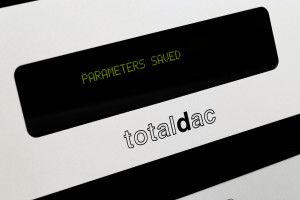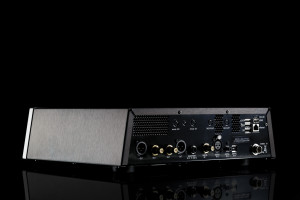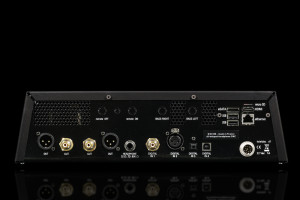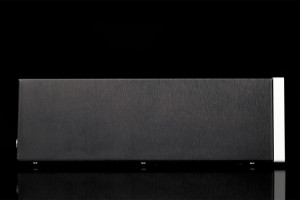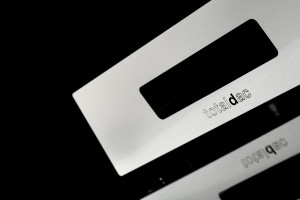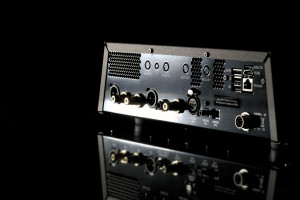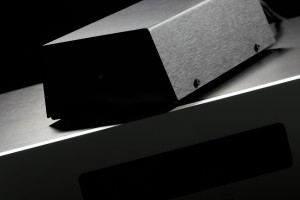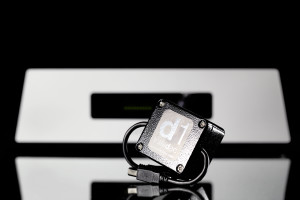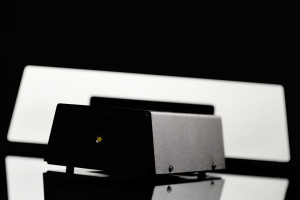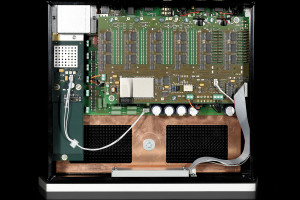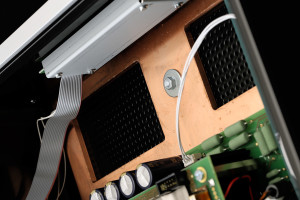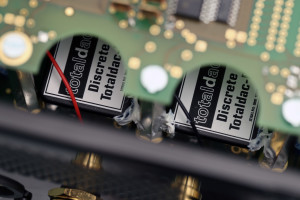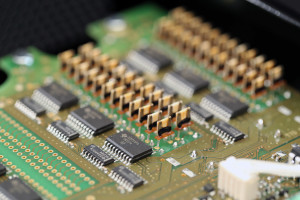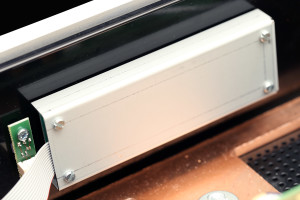Vincent Brient is the man behind Totaldac – a French company known for unique d/a converters. Its devices have a very specific topology and are said to sound very good. When an opportunity to review one of Vincent’s machines revealed itself, the decision to make it happen was made in a heartbeat. What courier delivered was a d1-integral-headphone. This is said gent’s streamer, d/a converter and a headphone amplifier all together in a one box. Enjoy.
Introduction
These days the audio world is full of possibilities for someone deep into digital music. Things got extremely varied over the years, which is obviously a good thing as one can pick and choose to his/her heart’s content. Especially when d/a converters – a.k.a. DAC-s – are on the table. From engineering perspective, the road to achieve the very same goal, namely to convert the signal from a digital to analogue domain and pass it along the road, can be very different. Practice shows that various approaches bring various results. But before we go any further, there’s one thing worth to remember, though. The overall sound quality of an audio product depends heavily on an engineer’s skill, his ability to connect pieces of the puzzle. I’d say that human input is the crucial part here. Elements used in order to make things work are of course important, yet a great cook can fancy a grand meal with literally nothing in the fridge.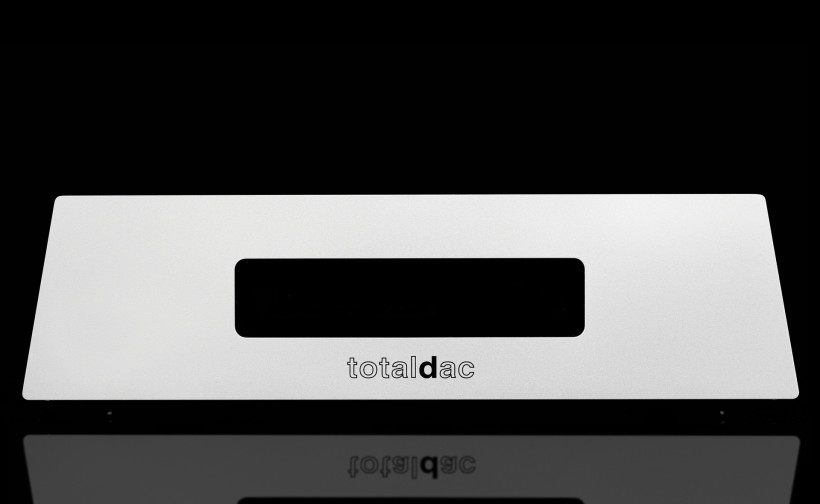 To some people this is a common knowledge, yet it had to be pointed out again as our hobby is full of individuals deeply interested in designs based only on a specific topology. On many levels it makes sense. For instance, if one is after class AB power amplifier to match a pair of difficult speakers, it’s very probable that in such specific case a 300B SET is a no-go. Someone in search of a low power pure class A amplification will discard heavyweight AB monster in a jiffy. The same story goes with speakers, open baffle fanatic won’t take small two-way bass-reflex affair into consideration and vice versa. These scenarios are rather understandable.
To some people this is a common knowledge, yet it had to be pointed out again as our hobby is full of individuals deeply interested in designs based only on a specific topology. On many levels it makes sense. For instance, if one is after class AB power amplifier to match a pair of difficult speakers, it’s very probable that in such specific case a 300B SET is a no-go. Someone in search of a low power pure class A amplification will discard heavyweight AB monster in a jiffy. The same story goes with speakers, open baffle fanatic won’t take small two-way bass-reflex affair into consideration and vice versa. These scenarios are rather understandable.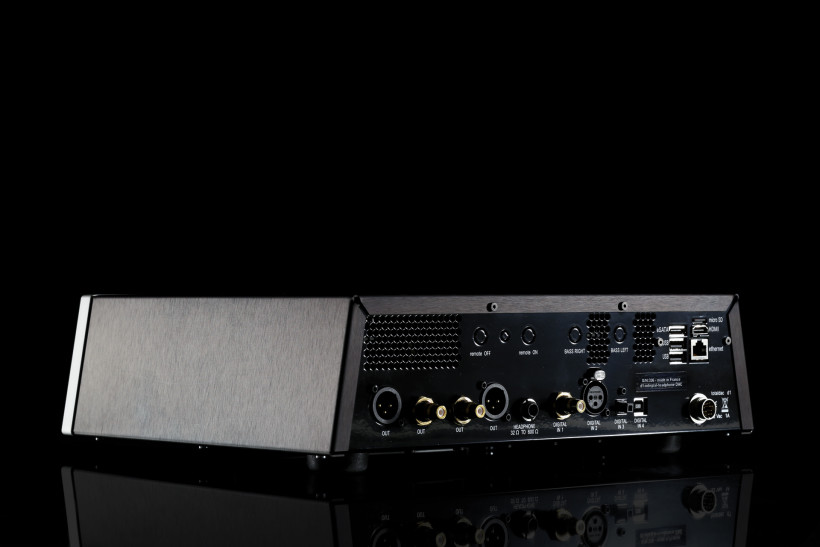 It’s quite a different story with DAC-s. Many people focus primarily on a d/a conversion method, whether it’s a single Sigma-Delta chip or several of these stacked, vintage R-2R of PCM1704 or TDA1543 sort, chipless scheme, FPGA upsamplig plus low-pass filter and so on. But there’s so much more than that, namely power supply, digital receivers, current to voltage conversion, output section etc. Each of these can be implemented in many different ways and is partly responsible for the outcome. Many highly regarded engineers say that power supply is of importance greater than a d/a conversion route itself. Moving on, it’s easy to understand why enthusiasts with big coin to spend avoid Sigma-Delta chips. These are often used in very affordable products, therefore are considered as not kosher enough. Often narrow price frame is the main limiting factor, therefore options an engineer has to exploit are heavily reduced. No fancy power supply, FPGA’s, tubes and exquisites of this sort lead to an outcome way below spectacular, but in minds of many people… ΣΔ’s are the only ones to blame. Odd, ain’t it?
It’s quite a different story with DAC-s. Many people focus primarily on a d/a conversion method, whether it’s a single Sigma-Delta chip or several of these stacked, vintage R-2R of PCM1704 or TDA1543 sort, chipless scheme, FPGA upsamplig plus low-pass filter and so on. But there’s so much more than that, namely power supply, digital receivers, current to voltage conversion, output section etc. Each of these can be implemented in many different ways and is partly responsible for the outcome. Many highly regarded engineers say that power supply is of importance greater than a d/a conversion route itself. Moving on, it’s easy to understand why enthusiasts with big coin to spend avoid Sigma-Delta chips. These are often used in very affordable products, therefore are considered as not kosher enough. Often narrow price frame is the main limiting factor, therefore options an engineer has to exploit are heavily reduced. No fancy power supply, FPGA’s, tubes and exquisites of this sort lead to an outcome way below spectacular, but in minds of many people… ΣΔ’s are the only ones to blame. Odd, ain’t it?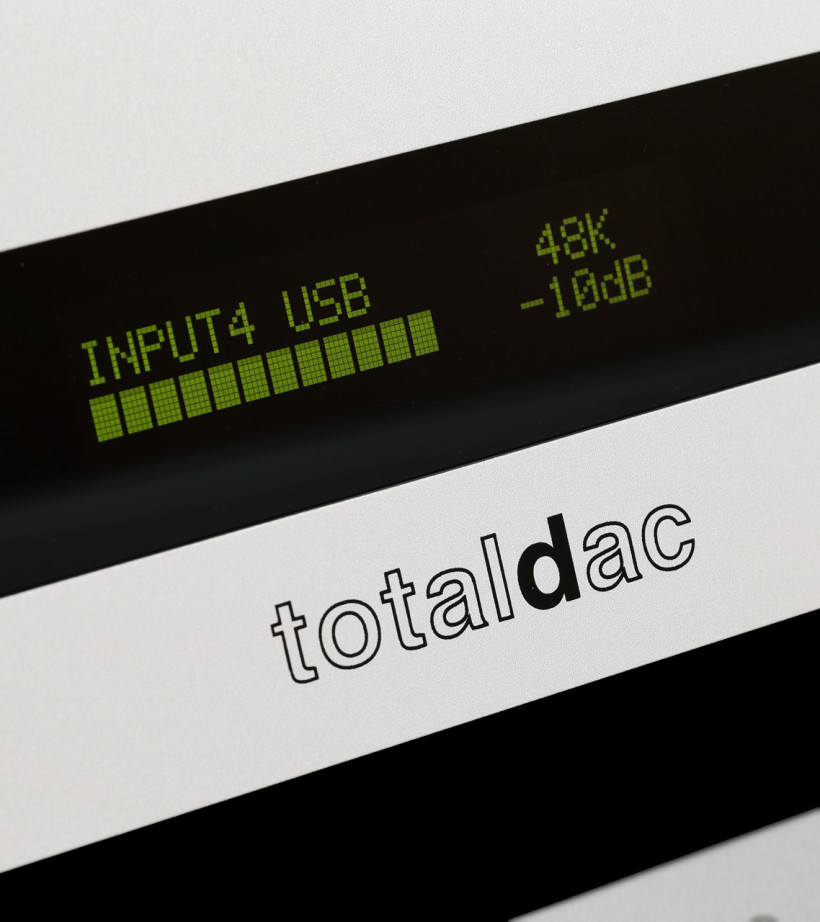 My personal experience tells me that exotic d/a conversion based DAC-s often sound amazing indeed, Chord Hugo for example. But at the same time marvelous products like Sigma-Delta fed AURALiC Vega or times more affordable iFi Audio iDSD happen. Moving upwards, quite a few high-end manufacturers use chips of this sort in expensive products and with great outcome, namely Fore Audio DAISy 1 or COS Engineering D1. Besides, DAC-s are getting better and better, that’s my subjective impression. To conclude, instead of bashing a certain topology, it’s safe to simply be open-minded and shift the focus from single parts to i.e. greatly skilled engineers. This review is about a product made by one such individual from France – Vincent Brient – who follows his own path for quite a while now. Officially from 2011 to be exact, but for more than a decade he’s been a telecommunications engineer. His Totaldac d1-integral-headphone is a very uniquely built d/a converter with many twists inside. No, it’s not ΣΔ, naysayers to these can read on dauntlessly…
My personal experience tells me that exotic d/a conversion based DAC-s often sound amazing indeed, Chord Hugo for example. But at the same time marvelous products like Sigma-Delta fed AURALiC Vega or times more affordable iFi Audio iDSD happen. Moving upwards, quite a few high-end manufacturers use chips of this sort in expensive products and with great outcome, namely Fore Audio DAISy 1 or COS Engineering D1. Besides, DAC-s are getting better and better, that’s my subjective impression. To conclude, instead of bashing a certain topology, it’s safe to simply be open-minded and shift the focus from single parts to i.e. greatly skilled engineers. This review is about a product made by one such individual from France – Vincent Brient – who follows his own path for quite a while now. Officially from 2011 to be exact, but for more than a decade he’s been a telecommunications engineer. His Totaldac d1-integral-headphone is a very uniquely built d/a converter with many twists inside. No, it’s not ΣΔ, naysayers to these can read on dauntlessly…
Build
Every Totaldac device looks exactly the same. It has the same chassis, front panel, display and power supply. The question is whether one gets single box or several. For instance, d1-twelve DAC is a three-piece product. Add three power supplies for each element and a fair amount of space is needed. Yet that’s the price one has to pay in order to get the best Totaldac has to offer. This review’s main dish – d1-integral-headphone – is of different sort. It’s a d1-single-mk2 d/a converter with two things embedded inside: headphone out and d1-server. The former is a standard d1-single-mk2 feature whereas the latter can be bought as a completely separate product. So from functional perspective, d1-integral-headphone serves as a d/a converter, preamplifier, Roon ready streamer and a headphone amplifier. To think about this device as a complete headphone system which requires only transport to be operational, is as correct as it gets. Just plug this machine to your NAS fed router or a laptop, hook it with a set of cans and you’re ready to go. The other scenario involves executing the first part in the same fashion, but using stereo rig instead of headphones. Totaldac d1-integral-headphone is quite small. It measures 110 x 360 x 290 mm and weighs 6,5 kg. That’s nothing crazy. Based on a separate toroidal transformer power supply (65 x 112 x 180 mm) comes in as a part of the package as a must. The core machine won’t work without it. Said solution is done to improve the sound quality. But the cable that connects both pieces is long enough to remove the latter from one’s sight. Dandy. Moving on, the main machine is very decently made, dare I say it looks much better in real life than on the pictures. And subjectively, Vincent’s devices are aesthetically very appealing. Trapeze alike shape makes these recognizable, different and at the same time strangely universal visual-wise. The product’s main chassis part is made out of brushed aluminium finished in matte black, whereas the front can be a solid piece of PMMA in the same colour or massive silver aluminium bar. The latter adds €350 to the tab. The rear is steel and glossy, it looks nice as well. For the purpose of this review, silver option was provided as both Vincent and I agreed that this finish is the one that’ll look nicer with black background based photos.
Totaldac d1-integral-headphone is quite small. It measures 110 x 360 x 290 mm and weighs 6,5 kg. That’s nothing crazy. Based on a separate toroidal transformer power supply (65 x 112 x 180 mm) comes in as a part of the package as a must. The core machine won’t work without it. Said solution is done to improve the sound quality. But the cable that connects both pieces is long enough to remove the latter from one’s sight. Dandy. Moving on, the main machine is very decently made, dare I say it looks much better in real life than on the pictures. And subjectively, Vincent’s devices are aesthetically very appealing. Trapeze alike shape makes these recognizable, different and at the same time strangely universal visual-wise. The product’s main chassis part is made out of brushed aluminium finished in matte black, whereas the front can be a solid piece of PMMA in the same colour or massive silver aluminium bar. The latter adds €350 to the tab. The rear is steel and glossy, it looks nice as well. For the purpose of this review, silver option was provided as both Vincent and I agreed that this finish is the one that’ll look nicer with black background based photos. The product is delivered in two boxes, smaller with the main dish was put into the other, much bigger. What came in in the package was also Vincent’s 0,25 m USB filter, 2.0 m ethernet cable and plastic remote control. The last one comes in as a standard feature. But in order to get the remaining additions, one has to dish out €360 and €390 respectively. d1-integral-headphone has a very nice OLED display that gives all needed informations; current digital input selection, file density and volume control, which goes from -70 to 0 dB. User also can invert the absolute phase of the signal, set its ground to connected or unconnected or apply FIR compensation filter. Vincent likes non-oversampling DAC-s, yet what he dislikes is 3 dB treble decrease at 20 kHz, so he developed a filtration only for higher frequencies to balance the loss. One thing needs to be pointed out very clearly, Vincent’s product works flawlessly. It gets no hiccups, is very responsive to RC commands and there’s no noticeable delay when switching between various key functions. It’s simply felt that this device is very solid from pure UI perspective. The machine’s rear is generous, regulated XLR and RCA outputs are on the left, both of the same 3Vrms. Therefore yes, XLR’s are here to make d1-integral-headphone more versatile, not fully balanced. The attenuation itself is handled by an FPGA with 69-bit resolution. It’d be nice if RCA/XLR socketry was marked as “left” and “right”. Next is a headphone out (3Vrms, 1,2W peak power under 15 ohm load), and four standard digital inputs in total; coaxial S/PDIF, AES/EBU, TOSLINK and USB. A bit to the right sits AC socket (power supply has a regular IEC on its back, a diode and an on/off switch), and a server part is located above. It consists of two USB ports of type A, eSATA, RJ45, HDMI inputs and microSD slot. The total power consumption is 22W. Additional commentary should be made about how to configure d1-integral-headphone and make the Roon magic happen. Yet I won’t do this job better than Vincent himself, his on-site tutorial handles said description perfectly.
The product is delivered in two boxes, smaller with the main dish was put into the other, much bigger. What came in in the package was also Vincent’s 0,25 m USB filter, 2.0 m ethernet cable and plastic remote control. The last one comes in as a standard feature. But in order to get the remaining additions, one has to dish out €360 and €390 respectively. d1-integral-headphone has a very nice OLED display that gives all needed informations; current digital input selection, file density and volume control, which goes from -70 to 0 dB. User also can invert the absolute phase of the signal, set its ground to connected or unconnected or apply FIR compensation filter. Vincent likes non-oversampling DAC-s, yet what he dislikes is 3 dB treble decrease at 20 kHz, so he developed a filtration only for higher frequencies to balance the loss. One thing needs to be pointed out very clearly, Vincent’s product works flawlessly. It gets no hiccups, is very responsive to RC commands and there’s no noticeable delay when switching between various key functions. It’s simply felt that this device is very solid from pure UI perspective. The machine’s rear is generous, regulated XLR and RCA outputs are on the left, both of the same 3Vrms. Therefore yes, XLR’s are here to make d1-integral-headphone more versatile, not fully balanced. The attenuation itself is handled by an FPGA with 69-bit resolution. It’d be nice if RCA/XLR socketry was marked as “left” and “right”. Next is a headphone out (3Vrms, 1,2W peak power under 15 ohm load), and four standard digital inputs in total; coaxial S/PDIF, AES/EBU, TOSLINK and USB. A bit to the right sits AC socket (power supply has a regular IEC on its back, a diode and an on/off switch), and a server part is located above. It consists of two USB ports of type A, eSATA, RJ45, HDMI inputs and microSD slot. The total power consumption is 22W. Additional commentary should be made about how to configure d1-integral-headphone and make the Roon magic happen. Yet I won’t do this job better than Vincent himself, his on-site tutorial handles said description perfectly. Let’s get to innards. To some degree, all Totaldac devices are similar. Not only chassis these share shared, but also Vincent’s d/a conversion method. He didn’t go after a specific chip that’d do the job, he doesn’t use any at all in fact. To simplify, there is a number of vintage R-2R circuits ready to be used, but our French engineer has decided to design his own from scratch. It took him many attempts, iterations and years to pull this off. Long enough to convince himself that this is the best possible way. The effect is not a small d/a conversion unit, but a rather large PCB that consists mainly of 96 0.01% VAR Bulk Metal Foil resistors made by Vishay and an FPGA glue logic. That’s a beautiful sight to be seen. Yet it’s easy to spot that only 1/3 of all resistor places is occupied. Said element’s number is a bit off, nowhere near the declared 100 value. Well, additional empty rows are filled with the same resistors in pricier Totaldac models and as for the number, what’s seen is four rows, 12 resistor parts in each. This gives us 48 Vishays in total… times two. On the very same PCB’s underside the rest of these buggers is hid. Mystery solved then, let’s move on. The board below is a home for discrete voltage regulators, filtering capacitors and an output stage. The last one consists of two discrete class A (voltage amplification and buffering) modules developed by Vincent and used i.e. in his d1-six DAC. Not much is known about said elements. But the man himself spilled the beans that his headphone amp exploits some of that output goodness. And if one is still salty because of 96 and not 100 Vishays, the rest sits in transformers. CuBox platform handles the server part and the USB input is based on an XMOS chip. Surprise, surprise, official iFi Audio USB drivers worked like a charm. Key innards in d1-integral-headphone are attached to a solid copper slab, which makes the product stable. Internal damping material is placed on the upper chassis part, lots of RF shielding is visible too. In order to fight jitter, FPGA’s FIFO memory buffer is used. It stores 10 ms of audio data and local oscillator handles timing. To exploit that properly, Vincent suggested to use his USB filter once d1-integral-headphone was fed via RJ45 input.
Let’s get to innards. To some degree, all Totaldac devices are similar. Not only chassis these share shared, but also Vincent’s d/a conversion method. He didn’t go after a specific chip that’d do the job, he doesn’t use any at all in fact. To simplify, there is a number of vintage R-2R circuits ready to be used, but our French engineer has decided to design his own from scratch. It took him many attempts, iterations and years to pull this off. Long enough to convince himself that this is the best possible way. The effect is not a small d/a conversion unit, but a rather large PCB that consists mainly of 96 0.01% VAR Bulk Metal Foil resistors made by Vishay and an FPGA glue logic. That’s a beautiful sight to be seen. Yet it’s easy to spot that only 1/3 of all resistor places is occupied. Said element’s number is a bit off, nowhere near the declared 100 value. Well, additional empty rows are filled with the same resistors in pricier Totaldac models and as for the number, what’s seen is four rows, 12 resistor parts in each. This gives us 48 Vishays in total… times two. On the very same PCB’s underside the rest of these buggers is hid. Mystery solved then, let’s move on. The board below is a home for discrete voltage regulators, filtering capacitors and an output stage. The last one consists of two discrete class A (voltage amplification and buffering) modules developed by Vincent and used i.e. in his d1-six DAC. Not much is known about said elements. But the man himself spilled the beans that his headphone amp exploits some of that output goodness. And if one is still salty because of 96 and not 100 Vishays, the rest sits in transformers. CuBox platform handles the server part and the USB input is based on an XMOS chip. Surprise, surprise, official iFi Audio USB drivers worked like a charm. Key innards in d1-integral-headphone are attached to a solid copper slab, which makes the product stable. Internal damping material is placed on the upper chassis part, lots of RF shielding is visible too. In order to fight jitter, FPGA’s FIFO memory buffer is used. It stores 10 ms of audio data and local oscillator handles timing. To exploit that properly, Vincent suggested to use his USB filter once d1-integral-headphone was fed via RJ45 input.
Sound
In order to find out what kind of a performer Totaldac d1-integral-headphone really is, several things had to be done. As most of people into audio of such calibre know, this device is a d/a converter above all else. So that had to be taken care of in the very first place. In order to grasp said device’s sound profile, my main rig was used. Vincent’s product went up against LampizatOr’s balanced Golden Gate model. The price difference between both units is rather significant, yet thanks to such comparisons a reality check happens and the real product’s value can be established. That aside, what had to be done too was the quality of Totaldac’s inputs. The unit was designed to work in the Roon environment, via RJ45. Yet at least one additional had to be checked out, as not everyone has an opportunity to connect NAS fed router to Totaldac. The obvious choice was this product’s USB in. It also was worth finding out how good is French device’s volume control.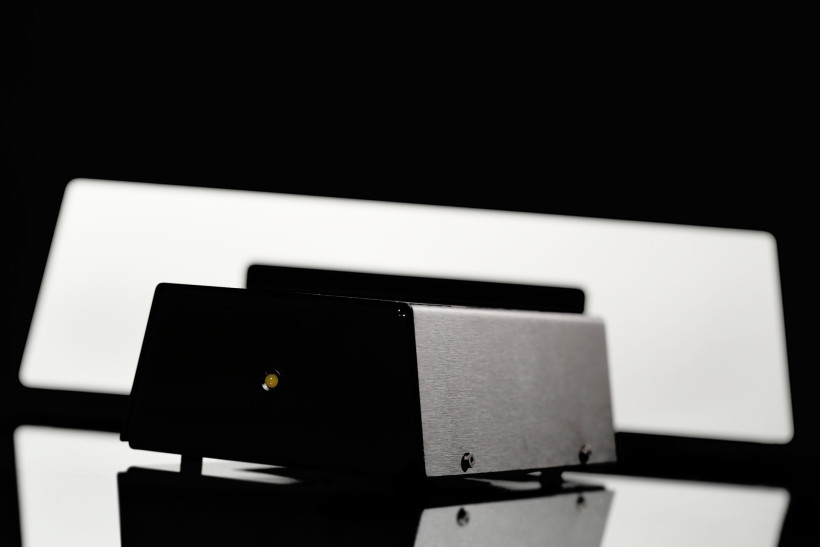 To confirm initial observations in the big setup (Trilogy 925 and Boenicke Audio W8), Firstwatt F7 and Xavian’s Perla monitors were used with the same sources. After this experiment it was high time to bring d1-integral-headphone to a smaller rack. The desktop platform consists of W5 monitors by Sven Boenicke, Firstwatt F7 and Xonar Essence III d/a converter. Vincent’s product replaced the last one, obviously. And since Xonar’s device is both a d/a converter and a headphone amplifier, it was a perfect opportunity to find out what French device can do with headphones. Well, that was the original idea. But in the nick of time something special arrived, Polish Divaldi AMP 01 devil. This cute little thing is a discrete Class A headphone affair with a phonostage twist on its back. Said topology is a promise of something special soundwise, hence the choice to go that road. HE-1000 and Meze 99 Classics were used to execute this part of the task. That’s the whole plan, now it’s time to describe how things went.
To confirm initial observations in the big setup (Trilogy 925 and Boenicke Audio W8), Firstwatt F7 and Xavian’s Perla monitors were used with the same sources. After this experiment it was high time to bring d1-integral-headphone to a smaller rack. The desktop platform consists of W5 monitors by Sven Boenicke, Firstwatt F7 and Xonar Essence III d/a converter. Vincent’s product replaced the last one, obviously. And since Xonar’s device is both a d/a converter and a headphone amplifier, it was a perfect opportunity to find out what French device can do with headphones. Well, that was the original idea. But in the nick of time something special arrived, Polish Divaldi AMP 01 devil. This cute little thing is a discrete Class A headphone affair with a phonostage twist on its back. Said topology is a promise of something special soundwise, hence the choice to go that road. HE-1000 and Meze 99 Classics were used to execute this part of the task. That’s the whole plan, now it’s time to describe how things went.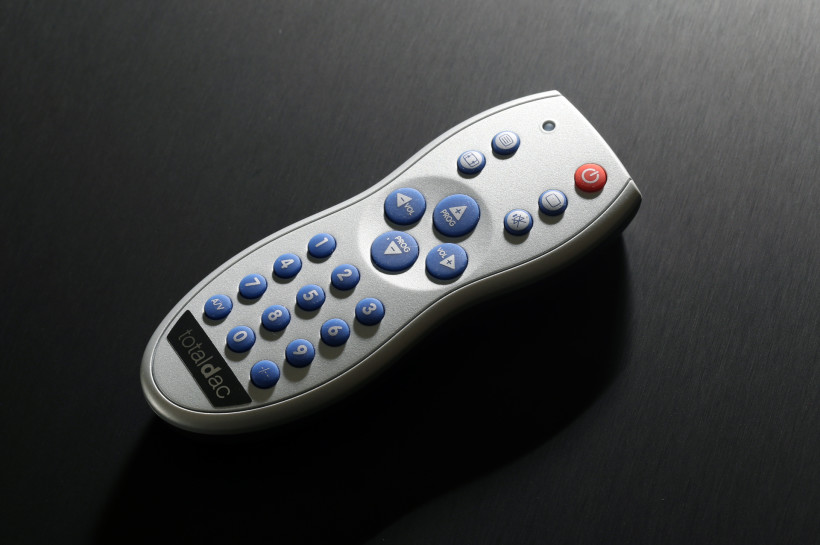 In the so-called big rig it was rather obvious that soundwise two completely different performers were compared. One thing was certain form the very beginning: in many aspects this was a battle of different philosophies and goals. From purely subjective perspective, not every day such fun giving comparisons happen in this hobby. Often it’s better versus worse case. Yet this time around, vastly different flavours were served. At this point it’s worth to know that since Golden Gate’s DSD engine accepts only signal via USB input, Totaldac was connected to a laptop in the very same way to make things even. After that matter was done, the latter was used in an environment suggested by Vincent, namely router + NAS + Roon + iPad based RC. Said gent’s heavily filtered ethernet and USB cables were there too.
In the so-called big rig it was rather obvious that soundwise two completely different performers were compared. One thing was certain form the very beginning: in many aspects this was a battle of different philosophies and goals. From purely subjective perspective, not every day such fun giving comparisons happen in this hobby. Often it’s better versus worse case. Yet this time around, vastly different flavours were served. At this point it’s worth to know that since Golden Gate’s DSD engine accepts only signal via USB input, Totaldac was connected to a laptop in the very same way to make things even. After that matter was done, the latter was used in an environment suggested by Vincent, namely router + NAS + Roon + iPad based RC. Said gent’s heavily filtered ethernet and USB cables were there too. To make it short and understandable, with PC based transport bypassed, things were the best. The sound was more resolving and a bit denser, yet without any negative side effects. I’d say that in comparison to USB input, the outcome was more cheerful and detailed. It might seem unfair to run Golden Gate via a laptop and d1-integral-headphone as described. But the goal was to squeeze every bit of a performance out of these two machines and there was no other way to do so. Well, Golden Gate can be fed with the latter’s signal, it would be extremely convenient from my perspective. Yet DSD engine of the former would be bypassed and that’s a big no.
To make it short and understandable, with PC based transport bypassed, things were the best. The sound was more resolving and a bit denser, yet without any negative side effects. I’d say that in comparison to USB input, the outcome was more cheerful and detailed. It might seem unfair to run Golden Gate via a laptop and d1-integral-headphone as described. But the goal was to squeeze every bit of a performance out of these two machines and there was no other way to do so. Well, Golden Gate can be fed with the latter’s signal, it would be extremely convenient from my perspective. Yet DSD engine of the former would be bypassed and that’s a big no.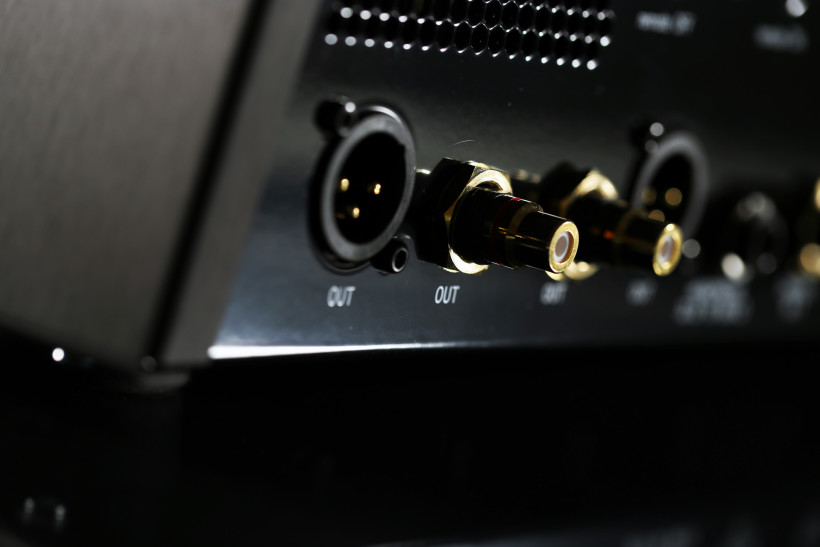 Moving on, at least several times yours truly pointed out that LampizatOr’s DAC-s tend to sound rather direct. That’s the case when the very first row of instruments is served quite closely to a listener and clarity is added to the mix. Totaldac isn’t that kind of a device, more laid back presentation is something one gets instead. Yet this time it’s not round sound versus precise matter exactly, or brighter versus darker. In terms of sheer tonal balance and saturation things are quite even in many aspects. Yet the differences are rather huge nonetheless. It’s safe to say that d1-integral-headphone sounds mellow and relaxing whereas Golden Gate is undoubtedly the direct one out of the two. It involves listener with said directness, it provides a very close, yet not necessarily intimate contact with music. Totaldac’s machine has less jumpy nature, it simply isn’t as feisty. Yet at the same time it involves one with calm approach and overall balance.
Moving on, at least several times yours truly pointed out that LampizatOr’s DAC-s tend to sound rather direct. That’s the case when the very first row of instruments is served quite closely to a listener and clarity is added to the mix. Totaldac isn’t that kind of a device, more laid back presentation is something one gets instead. Yet this time it’s not round sound versus precise matter exactly, or brighter versus darker. In terms of sheer tonal balance and saturation things are quite even in many aspects. Yet the differences are rather huge nonetheless. It’s safe to say that d1-integral-headphone sounds mellow and relaxing whereas Golden Gate is undoubtedly the direct one out of the two. It involves listener with said directness, it provides a very close, yet not necessarily intimate contact with music. Totaldac’s machine has less jumpy nature, it simply isn’t as feisty. Yet at the same time it involves one with calm approach and overall balance.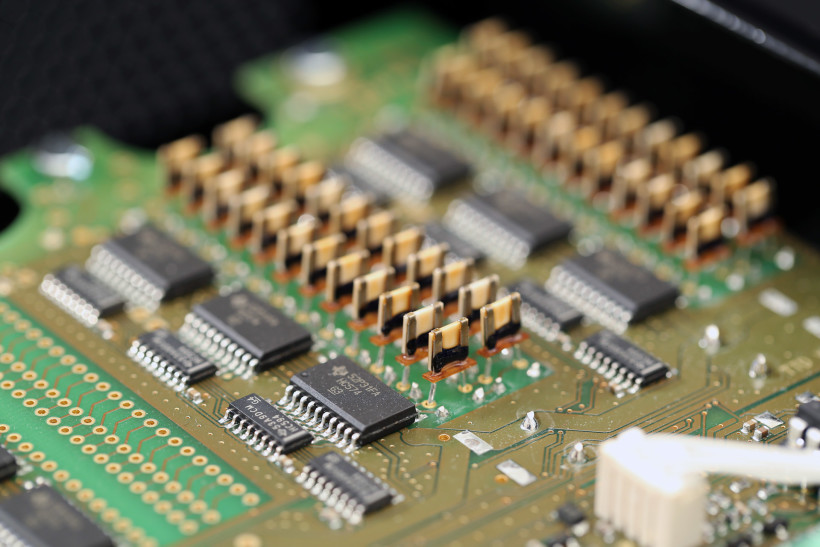 At this point one thing has to be brought up, though. Golden Gate equipped with four WE101D-L DHT’s and an amazing KR Audio 5U4G rectifier made for Łukasz Fikus exclusively is very punchy. Greatly different outcome happens when Psvane’s 274B and 300B’s set is used instead. What I want to say is that this is the most direct and openly sounding source I had a pleasure to listen to. In comparison, Vincent’s product achieves a perfect balance, no aspect other than this one stands out of the crowd. It doesn’t sound neither too fast, nor too slow, sharp, dull, meaty, lifeless or hollow. It has everything in the right amount and served in the right way, to my ears at least. And that’s one of its trading cards, it’s universal.
At this point one thing has to be brought up, though. Golden Gate equipped with four WE101D-L DHT’s and an amazing KR Audio 5U4G rectifier made for Łukasz Fikus exclusively is very punchy. Greatly different outcome happens when Psvane’s 274B and 300B’s set is used instead. What I want to say is that this is the most direct and openly sounding source I had a pleasure to listen to. In comparison, Vincent’s product achieves a perfect balance, no aspect other than this one stands out of the crowd. It doesn’t sound neither too fast, nor too slow, sharp, dull, meaty, lifeless or hollow. It has everything in the right amount and served in the right way, to my ears at least. And that’s one of its trading cards, it’s universal.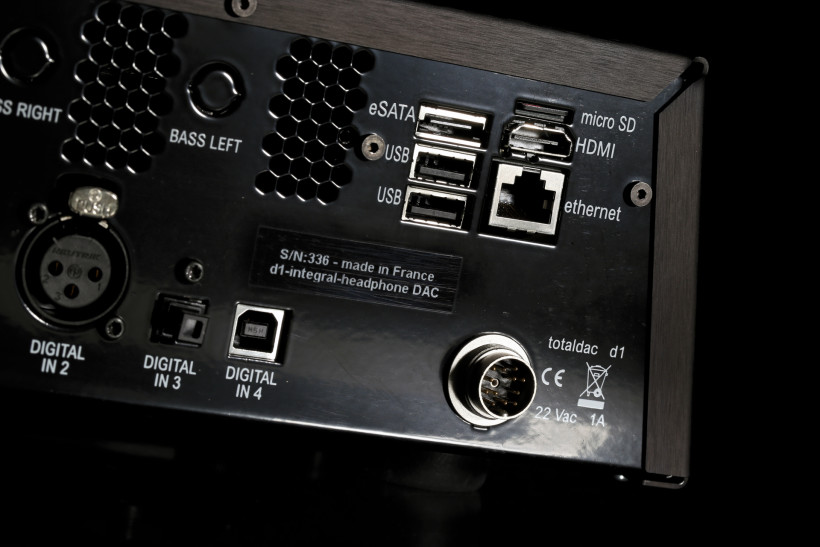 Of course there are many sources that sound “right” and are plainly good for less coin than d1-integral-headphone and Golden Gate. But these two have several things in common that are reserved for a very special products. Namely smoothness, marvelous soundstage and exceptional finishing touches to. i.e high frequencies. Both aren’t capable of sounding sharp or overly thin. Said features served as a package aren’t a part of many times less expensive devices of the same breed. That’s the difference. In case of discussed Polish and French products of this very sort, listener doesn’t feel the urge during listening session to change anything. He simply is drawn into the music instead and has a blast, at least that’s how things look like from my perspective. It’s actually liberating to sit, have a listen and don’t bother with any improvements to be made shortly after the music is off, even subconsciously. That’s quite an achievement in my book and both Vincent and Łukasz were able to pull this off.
Of course there are many sources that sound “right” and are plainly good for less coin than d1-integral-headphone and Golden Gate. But these two have several things in common that are reserved for a very special products. Namely smoothness, marvelous soundstage and exceptional finishing touches to. i.e high frequencies. Both aren’t capable of sounding sharp or overly thin. Said features served as a package aren’t a part of many times less expensive devices of the same breed. That’s the difference. In case of discussed Polish and French products of this very sort, listener doesn’t feel the urge during listening session to change anything. He simply is drawn into the music instead and has a blast, at least that’s how things look like from my perspective. It’s actually liberating to sit, have a listen and don’t bother with any improvements to be made shortly after the music is off, even subconsciously. That’s quite an achievement in my book and both Vincent and Łukasz were able to pull this off.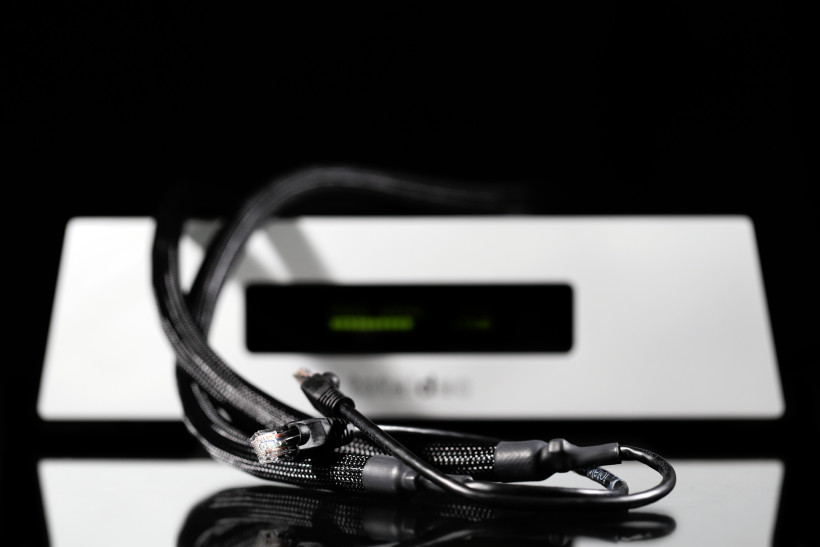 d1-integral-headphone sounds simply “right” and Golden Gate is “direct one”, but that’s just a part of the whole story. Such statement won’t answer the question about which one of these two undecided listener should go after sound wise. Where are the actual and the biggest differences between said machines? That’s a very simple thing, heard in a heartbeat. LampizatOr’s flagship paints much bigger picture in front of a listener. In a way it sounds more impressive because of that. Totaldac’s d/a converter builds generously wide soundstage, yet it focuses on what’s between the speakers mostly, whereas Golden Gate covers literally every inch of a wall behind these and in an impressive, distinctive way. It exceptionally effortlessly differentiates distances drawn between instruments and a listener and as equally easily shows layer after layer. Totaldac is about something else, it doesn’t emphasize this aspect. In its case the soundstage is the addition, not the main focusing points. In comparison to Golden Gate, this machine sounds less spectacular at first. But after minutes the notion of every piece of music present is there, but delivered in a different, very engaging and appealing way. Vincent’s machine also handles layering like a champ, no questions asked.
d1-integral-headphone sounds simply “right” and Golden Gate is “direct one”, but that’s just a part of the whole story. Such statement won’t answer the question about which one of these two undecided listener should go after sound wise. Where are the actual and the biggest differences between said machines? That’s a very simple thing, heard in a heartbeat. LampizatOr’s flagship paints much bigger picture in front of a listener. In a way it sounds more impressive because of that. Totaldac’s d/a converter builds generously wide soundstage, yet it focuses on what’s between the speakers mostly, whereas Golden Gate covers literally every inch of a wall behind these and in an impressive, distinctive way. It exceptionally effortlessly differentiates distances drawn between instruments and a listener and as equally easily shows layer after layer. Totaldac is about something else, it doesn’t emphasize this aspect. In its case the soundstage is the addition, not the main focusing points. In comparison to Golden Gate, this machine sounds less spectacular at first. But after minutes the notion of every piece of music present is there, but delivered in a different, very engaging and appealing way. Vincent’s machine also handles layering like a champ, no questions asked. After switch to Polish DAC things become more invigorating. In terms of smoothness there is a very slight difference between compared devices, yet the soundstage presentation is a completely different and easily audible thing. Golden Gate not only brings the first row closer, but makes instruments placed there bigger. This DAC also sketches these in a slightly edgier fashion, which makes sensation of the presentation being „here”. Also it hits harder in the bottom of audible FR. d1-integral-headphone doesn’t lack clarity at all, yet it handles the same tasks with more round approach and at the same time it makes listener to go deep into the soundstage more often. It has this „I’ll take you to my place” attitude. If I had to put things in blunt words, I’d say that Golden Gate filled the room with sound with greater ease and is airier, whereas Vincent’s device painted smaller, more romantic and tender picture. Apples and oranges.
After switch to Polish DAC things become more invigorating. In terms of smoothness there is a very slight difference between compared devices, yet the soundstage presentation is a completely different and easily audible thing. Golden Gate not only brings the first row closer, but makes instruments placed there bigger. This DAC also sketches these in a slightly edgier fashion, which makes sensation of the presentation being „here”. Also it hits harder in the bottom of audible FR. d1-integral-headphone doesn’t lack clarity at all, yet it handles the same tasks with more round approach and at the same time it makes listener to go deep into the soundstage more often. It has this „I’ll take you to my place” attitude. If I had to put things in blunt words, I’d say that Golden Gate filled the room with sound with greater ease and is airier, whereas Vincent’s device painted smaller, more romantic and tender picture. Apples and oranges. All things considered, not one but a lot of individuals would say that this is a case of completely different presentations and to a degree that’s about right. After Polish to French switch and past accommodation time, I had zero problems with d1-integral-headphone sound, on the contrary in fact. It delivered lots of analogue and quite romantic joy. The more time one spends with it, the more clear it becomes that this is a very refined performer. Not as obviously punchy and expansively sounding as Golden Gate, yet with enough power to show things in proper fashion when needed. It also has meat on the bones, brilliant soundstage depth with all of its layers and it sounds very lifelike thanks to great texturing and humane density. Vincent’s DAC shows all details with ease thanks to a fantastic black background, which is one of the best I’ve had a pleasure to witness in my editor’s life. I could go on in this manner for a while, yet I’m sure you get the point. It’s a damn fine source to have. Yet even despite all these factors, yours truly still has a hard time of letting go what Golden Gate does with music. Partially this is a case of this journalist’s own preferences. But after the exercise described above, I see a place for Vincent’s device in the big rig nonetheless, just for the sake of having vastly different presentation on hand.
All things considered, not one but a lot of individuals would say that this is a case of completely different presentations and to a degree that’s about right. After Polish to French switch and past accommodation time, I had zero problems with d1-integral-headphone sound, on the contrary in fact. It delivered lots of analogue and quite romantic joy. The more time one spends with it, the more clear it becomes that this is a very refined performer. Not as obviously punchy and expansively sounding as Golden Gate, yet with enough power to show things in proper fashion when needed. It also has meat on the bones, brilliant soundstage depth with all of its layers and it sounds very lifelike thanks to great texturing and humane density. Vincent’s DAC shows all details with ease thanks to a fantastic black background, which is one of the best I’ve had a pleasure to witness in my editor’s life. I could go on in this manner for a while, yet I’m sure you get the point. It’s a damn fine source to have. Yet even despite all these factors, yours truly still has a hard time of letting go what Golden Gate does with music. Partially this is a case of this journalist’s own preferences. But after the exercise described above, I see a place for Vincent’s device in the big rig nonetheless, just for the sake of having vastly different presentation on hand. 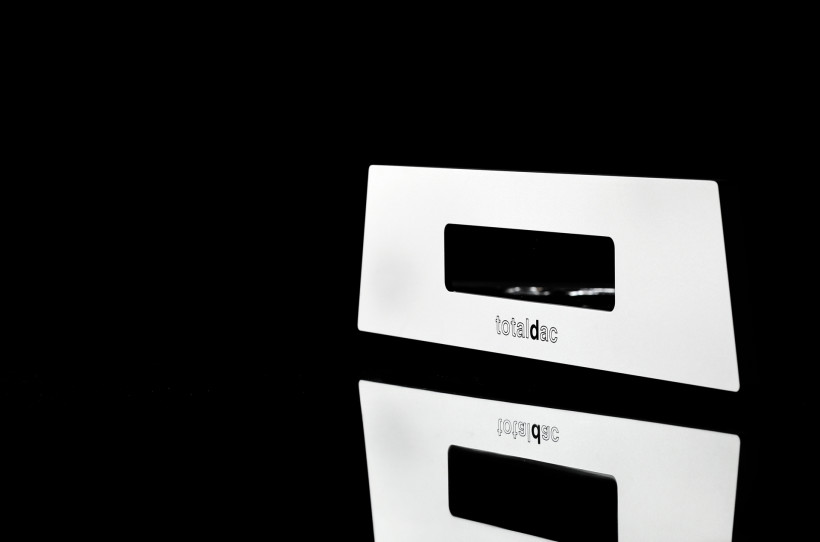 After scenario above, two devices were replaced. Firstwatt F7 jumped in instead of English 925 integrated and Sven’s W8 floorstanders were exchanged for Xavian’s Perla monitors. F7 model brings sweetness and clarity to the table, whereas Czech speakers are all about midrange saturation and involvement. Theoretically speaking, the outcome should be overly dense, yet it isn’t. Elevated temperature makes things extremely cosy and pleasant but F7’s transparency is what makes this combination work. Golden Gate fits here as it delivers air and speed, yet doesn’t take anything in exchange. It all clicks. After sources switch, the picture in front of a listener becomes slightly darker, thicker and smaller. It was to be expected that it will be less transparent but detail retrieval is the same. With d1-headphone-integral, the sound gained additional intimacy points and Xavian + Firstwatt thickness was shown in a more obvious way. Swiss W8 speakers created exceptional soundstage and Golden Gate showed that exactly with no restraints. But in a case of second setup it’s all about preferences more than anything else. It’s up to a listener whether he’d like to get more air and attitude, or simply go in intimacy and warmth direction.
After scenario above, two devices were replaced. Firstwatt F7 jumped in instead of English 925 integrated and Sven’s W8 floorstanders were exchanged for Xavian’s Perla monitors. F7 model brings sweetness and clarity to the table, whereas Czech speakers are all about midrange saturation and involvement. Theoretically speaking, the outcome should be overly dense, yet it isn’t. Elevated temperature makes things extremely cosy and pleasant but F7’s transparency is what makes this combination work. Golden Gate fits here as it delivers air and speed, yet doesn’t take anything in exchange. It all clicks. After sources switch, the picture in front of a listener becomes slightly darker, thicker and smaller. It was to be expected that it will be less transparent but detail retrieval is the same. With d1-headphone-integral, the sound gained additional intimacy points and Xavian + Firstwatt thickness was shown in a more obvious way. Swiss W8 speakers created exceptional soundstage and Golden Gate showed that exactly with no restraints. But in a case of second setup it’s all about preferences more than anything else. It’s up to a listener whether he’d like to get more air and attitude, or simply go in intimacy and warmth direction.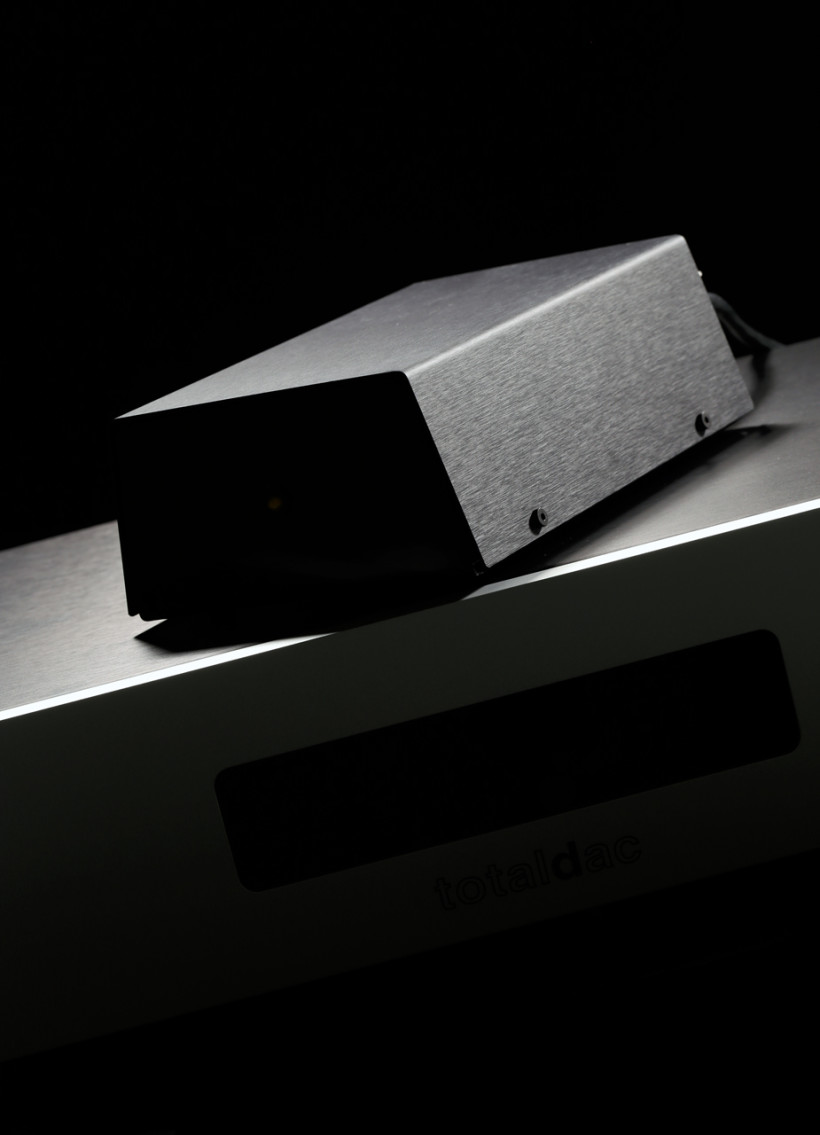 A “word” about Totaldac’s volume control. In short, it’s good. I think that the usage of it depends on the effect one would like to achieve, though. To check what’s what, Sanders Sound Systems preamplifier and Magtech amp were used. This is a happily married couple for sure. Thus far I was not able to find a solution that’d work better than said American company’s preamplifier in that setup. Neither Totaldac changes that, nor Golden Gate. Volume regulation of these two sources works in a similar way sound wise. Polish DAC-s TAIV VC-03 module makes things less saturated with Magtech power amp, in exchange for elevated contour and stiffness. The same story goes with French source, yet to a lesser degree. Less precision and rigidness is provided but with smaller textural takeaway. In regard of what’s lost and gained, Totaldac is safer as it brings smaller changes to the table. I think that in a case of built-in regulation that’s the goal, to simply adjust the volume with everything else intact. Unless one is after specific sound tuning and quid pro quo scenario described above fits the procedure.
A “word” about Totaldac’s volume control. In short, it’s good. I think that the usage of it depends on the effect one would like to achieve, though. To check what’s what, Sanders Sound Systems preamplifier and Magtech amp were used. This is a happily married couple for sure. Thus far I was not able to find a solution that’d work better than said American company’s preamplifier in that setup. Neither Totaldac changes that, nor Golden Gate. Volume regulation of these two sources works in a similar way sound wise. Polish DAC-s TAIV VC-03 module makes things less saturated with Magtech power amp, in exchange for elevated contour and stiffness. The same story goes with French source, yet to a lesser degree. Less precision and rigidness is provided but with smaller textural takeaway. In regard of what’s lost and gained, Totaldac is safer as it brings smaller changes to the table. I think that in a case of built-in regulation that’s the goal, to simply adjust the volume with everything else intact. Unless one is after specific sound tuning and quid pro quo scenario described above fits the procedure. In any case, similar things happen with Firstwatt F7 instead of Magtech stereo power amplifier in the same chain. American preamplifier adds more colour and dynamics, yet neither is transparency crippled, nor detailing or soundstage. It’s fair to say though, that aforementioned changes aren’t big this time. Audible? Yes, but not of a night and day difference. To conclude, Sanders Sound Systems preamplifier has a hefty $4’500 on its price tag. With F7 used to evaluate both DAC-s volume control, I’d say that this sum can be better spent elsewhere. Subjectively I’d stick to what both Totaldac and LampizatOr products are equipped with. At least to a point where there’s no room for an improvement any more and an additional piece of the puzzle has to be bought to avoid big components swaps. Maybe then it’s high time to start sound adjustments by a separate preamplifier addition. Yet Magtech power amp greatly benefits from the unit made by the same company. Too much in fact to not give it a go. Whether it’s worth the asking price is a completely different matter, but in this particular scenario it works great. That’s for sure.
In any case, similar things happen with Firstwatt F7 instead of Magtech stereo power amplifier in the same chain. American preamplifier adds more colour and dynamics, yet neither is transparency crippled, nor detailing or soundstage. It’s fair to say though, that aforementioned changes aren’t big this time. Audible? Yes, but not of a night and day difference. To conclude, Sanders Sound Systems preamplifier has a hefty $4’500 on its price tag. With F7 used to evaluate both DAC-s volume control, I’d say that this sum can be better spent elsewhere. Subjectively I’d stick to what both Totaldac and LampizatOr products are equipped with. At least to a point where there’s no room for an improvement any more and an additional piece of the puzzle has to be bought to avoid big components swaps. Maybe then it’s high time to start sound adjustments by a separate preamplifier addition. Yet Magtech power amp greatly benefits from the unit made by the same company. Too much in fact to not give it a go. Whether it’s worth the asking price is a completely different matter, but in this particular scenario it works great. That’s for sure.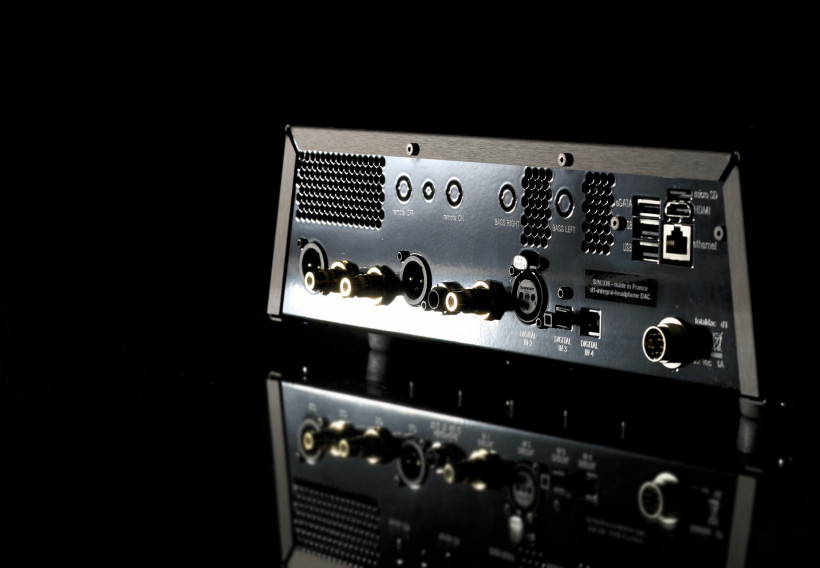 The big room was done, it was high time to bring d1-integral-headphone plus Firstwatt F7 with me to a smaller one. Boenicke W5 in a nearfield setup and Xonar Essence III were already there. Asus flagship can be bought in Europe these days for less than €1’600. That’s five times plus price difference in comparison to Vincent’s product. Why to bother then? To be honest, this exercise was done to evaluate how painful the law of diminishing returns is this time. It obviously is hard to put any ratio numbers here, at least that’s beyond my evaluation skills. So let me just say that both products perform on a completely different level. Knowing what W5 can do when properly fed, the sound this product delivers is OK in my desktop setup. It simply is satisfying to a degree that there’s no urge to change anything badly. When Vincent’s machine arrived, it very quickly turned out how much better the whole setup can do. It wasn’t a matter of “a bit better here and a bit better there”. I honestly can’t single out one aspect that hadn’t improved. The whole performance got more spacious and revealing, bluntly warm Essence III input was now gone and lifelike texturing appeared instead. But what was the most striking change is the depth. Essence III fared quite well in that regard. Yet in a direct comparison, Totaldac’s performer showed more, with much greater ease and in a lifelike way. This kind of a sound quality improvement in an environment this unfriendly made me think that – in said scenario – the scary law of diminishing returns simply didn’t apply this time.
The big room was done, it was high time to bring d1-integral-headphone plus Firstwatt F7 with me to a smaller one. Boenicke W5 in a nearfield setup and Xonar Essence III were already there. Asus flagship can be bought in Europe these days for less than €1’600. That’s five times plus price difference in comparison to Vincent’s product. Why to bother then? To be honest, this exercise was done to evaluate how painful the law of diminishing returns is this time. It obviously is hard to put any ratio numbers here, at least that’s beyond my evaluation skills. So let me just say that both products perform on a completely different level. Knowing what W5 can do when properly fed, the sound this product delivers is OK in my desktop setup. It simply is satisfying to a degree that there’s no urge to change anything badly. When Vincent’s machine arrived, it very quickly turned out how much better the whole setup can do. It wasn’t a matter of “a bit better here and a bit better there”. I honestly can’t single out one aspect that hadn’t improved. The whole performance got more spacious and revealing, bluntly warm Essence III input was now gone and lifelike texturing appeared instead. But what was the most striking change is the depth. Essence III fared quite well in that regard. Yet in a direct comparison, Totaldac’s performer showed more, with much greater ease and in a lifelike way. This kind of a sound quality improvement in an environment this unfriendly made me think that – in said scenario – the scary law of diminishing returns simply didn’t apply this time.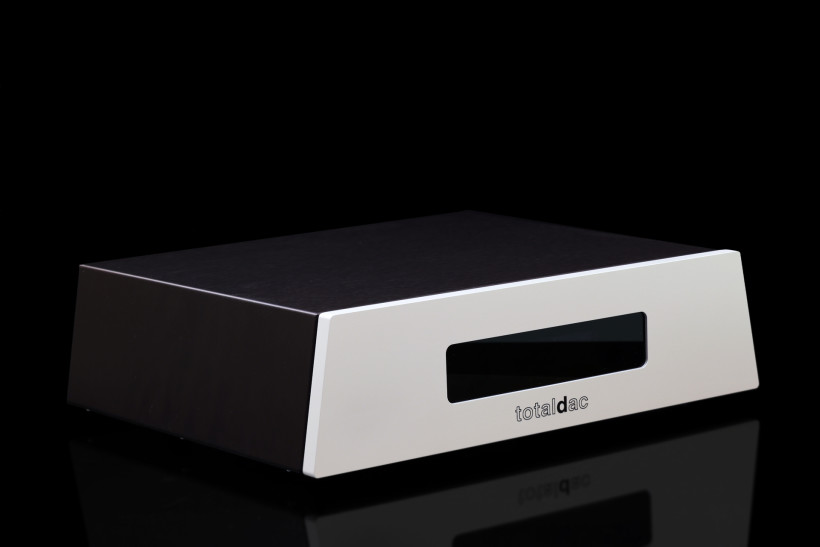 And finally, it was a time to check Totaldac’s headphone out. To do that, the device was used as a transport, source and a headphone amplifier. Divaldi AMP 01 was connected to its line-out. Switch between both was fast, the only thing that needed to be done was to set volume to max. in Vincent’s product before giving Polish amplifier a go. Again, soundwise two completely different machines were compared. AMP 01 model has a very strong character and d1-integral-headphone has… no character at all, it just amplifies. Let me elaborate on that part.
And finally, it was a time to check Totaldac’s headphone out. To do that, the device was used as a transport, source and a headphone amplifier. Divaldi AMP 01 was connected to its line-out. Switch between both was fast, the only thing that needed to be done was to set volume to max. in Vincent’s product before giving Polish amplifier a go. Again, soundwise two completely different machines were compared. AMP 01 model has a very strong character and d1-integral-headphone has… no character at all, it just amplifies. Let me elaborate on that part.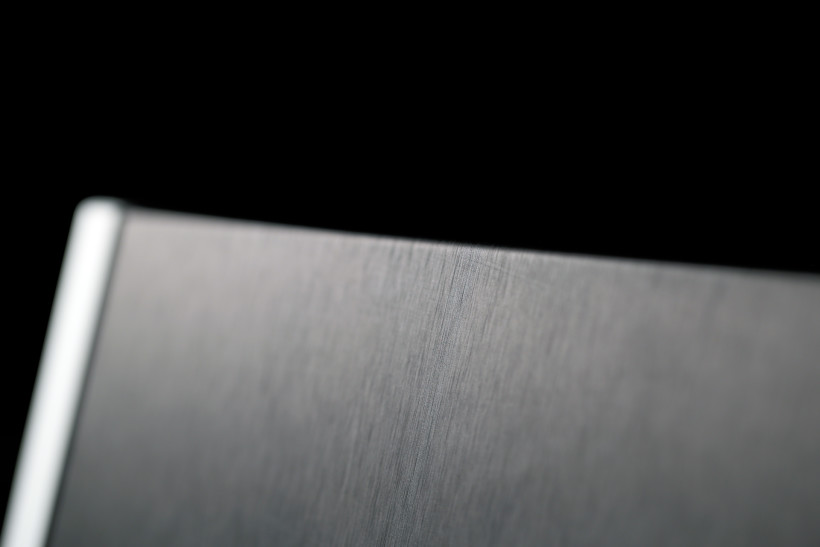 Polish device is exceptionally punchy and direct. In comparison, Vincent’s headphone section sounds like his DAC itself, it adds literally nothing else. The outcome is vastly different flavouring in both cases. With HE-1000 and Divaldi AMP 01, one gets great control, very nice saturation, effortless presentation and great resolution. Things are slightly on the warm side and the effect is very pleasing overall. Totaldac is mellower and similarly thick. It could use some extra force to make things more present in lower parts of the audible FR. But the sound isn’t thin or veiled, on the contrary. The point is that its calm nature is the dominating factor and that’s very enjoyable as well. Also, Vincent’s machine builds the soundstage deep, yet not as wide as its rival. It automatically makes the listener to focus on it, whereas AMP 01 with its more direct nature shows bigger picture instantly.
Polish device is exceptionally punchy and direct. In comparison, Vincent’s headphone section sounds like his DAC itself, it adds literally nothing else. The outcome is vastly different flavouring in both cases. With HE-1000 and Divaldi AMP 01, one gets great control, very nice saturation, effortless presentation and great resolution. Things are slightly on the warm side and the effect is very pleasing overall. Totaldac is mellower and similarly thick. It could use some extra force to make things more present in lower parts of the audible FR. But the sound isn’t thin or veiled, on the contrary. The point is that its calm nature is the dominating factor and that’s very enjoyable as well. Also, Vincent’s machine builds the soundstage deep, yet not as wide as its rival. It automatically makes the listener to focus on it, whereas AMP 01 with its more direct nature shows bigger picture instantly.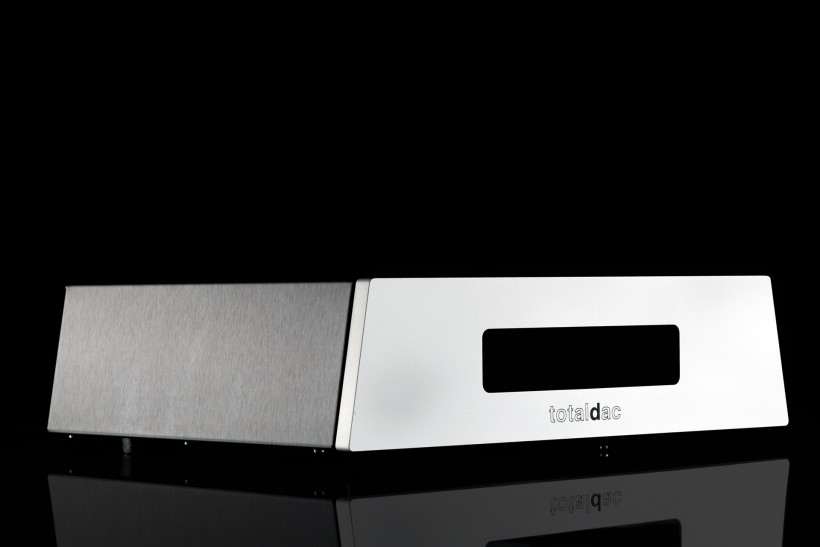 Let me stress again that d1-integral-headphone’s 6,3 mm out sounds like its line-out exactly. There is no other additive and it’s quite amazing actually to witness something like that, but it all makes sense. Vincent’s amplification section is very minimalistic as he wanted to make it as transparent as possible. It shows what his d/a conversion method is all about in an exceptionally precise manner. That’s a job done well in my book. So the real question is whether one is fine with such approach and is able to appreciate it, or not. Subjectively I think it’s remarkable what Vincent did. Even though his amplifier is designed to work with easy loads and cans like HE-1000 need a bit more juice to fully shine. The more time passed, the more I appreciated what has been done with 6,3 mm out in d1-integral-headphone, to find it very good in the end. After said experiment I’m confident that this element isn’t implemented just for the sake of device’s grander functionality. It’s well-thought if someone asks me. Hence it will be very appealing to individuals who are after “I want to hear my DAC and nothing else!” experience.
Let me stress again that d1-integral-headphone’s 6,3 mm out sounds like its line-out exactly. There is no other additive and it’s quite amazing actually to witness something like that, but it all makes sense. Vincent’s amplification section is very minimalistic as he wanted to make it as transparent as possible. It shows what his d/a conversion method is all about in an exceptionally precise manner. That’s a job done well in my book. So the real question is whether one is fine with such approach and is able to appreciate it, or not. Subjectively I think it’s remarkable what Vincent did. Even though his amplifier is designed to work with easy loads and cans like HE-1000 need a bit more juice to fully shine. The more time passed, the more I appreciated what has been done with 6,3 mm out in d1-integral-headphone, to find it very good in the end. After said experiment I’m confident that this element isn’t implemented just for the sake of device’s grander functionality. It’s well-thought if someone asks me. Hence it will be very appealing to individuals who are after “I want to hear my DAC and nothing else!” experience.
Summary
Vincent’s d1-integral-headphone is an expensive product to have, €8’400 is a lot of money. At the same time his device takes care of several needs. From functional side, things are tasty. One gets a brilliantly working streamer, which – once configured – is a pleasure to use and Roon ready, that’s hot these days. Not only its RJ45 input delivers sound better in comparison to USB, but also wireless control via iPad is simply very convenient. Vincent’s d1-server alone is sold for €4’990 and that’s a half of a d1-integral-headphone package. The latter is based on a d1-single-mk2 DAC, another €6’960 is out of the pocket. At this point it’s rather obvious, that going after two devices separately instead of one which handles both functions… makes the outcome considerably pricier. Of course this scenario is relevant only when one has already decided to move in aforementioned gent’s offer exclusively. In any case, if i.e. server option isn’t needed, d/a converter alone is for the taking. Totaldac’s portfolio is quite generous in terms of individual needs and that’s good.
The most important thing – sound – can justify or bash the price. d1-integral-headphone delivers a sophisticated, unforgettable experience in that regard. Vincent’s product sounds very refined, balanced, coherent, neutral and is very analogue overall, lifelike, mildly soft and pleasant. It doesn’t put additional light on any particular aspect in music, neither it elevates soundstage width, nor saturation or dynamics. It doesn’t tinker with contouring or tonal balance. It simply isn’t showy in any regard. When lack of sharpness and grain and exceptionally silent background are added to the mix, the outcome is very enjoyable. After several weeks with d1-integral-headphone I got the impression that this kind of a performance was Vincent’s goal from the very beginning. And let’s not forget about a very specific, unique headphone out, designed to meticulously show what Vincent Brient achieved on a d/a conversion field. All things considered, no bashing is needed as d1-integral-headphone performs exceptionally well.
Again, €8’400 is a hard pill to swallow. One can get a separate quality DAC, server and a headphone amplifier for this kind of coin. Is this road better than one box pursuit? That’s not for me to judge. But what I do know is that French DAC sounds grand and the server part works like a charm. Therefore d1-integral-headphone as a package is a well-executed product from R&D and performance perspectives. This has a lot of value, enough to give it a test run if one is after this kind of a machine and has aforementioned sum to spend. I’ll stick to Golden Gate as soundwise this device rings all my bells in the right way. Though let me tell you, that if you’re deep in the audio game of high calibre, you owe it to yourself to at least know how Totaldac sounds like. When an opportunity reveals itself, pick one model, it doesn’t matter which one. Simply give it a go and witness what kind of magic will happen. It’s highly probable that it will be the last one you’ll buy for a long, long time.
Associated equipment:
- Loudspeakers: Boenicke Audio W8, Boenicke Audio w5, Xavian Perla
- Amplifiers: FirstWatt F7, Trilogy 925, Sanders Sound Sustems Magtech
- Headphone amplifier: Divaldi AMP 01
- Headphones: HiFiMAN HE-1000, Meze 99 Classics
- Digital sources: Lampizator Golden Gate (WE101D-L + 5U4G Ltd. Ed.), Xonar Essence III
- Interconnects: Albedo Monolith
- Speaker cable: Albedo Monolith
- Power chords: Forza AudioWorks Noir Concept, Gigawatt LC-2 MK2
- Power delivery: Gigawatt PF-2 mk2
- Equipment racks: Lavardin K-Rak
- Music: NativeDSD
- Playback platform: Roon
Retail prices of reviewed components in EU:
- Totaldac d1-integral-headphone: €8’400
Manufacturer: Totaldac


